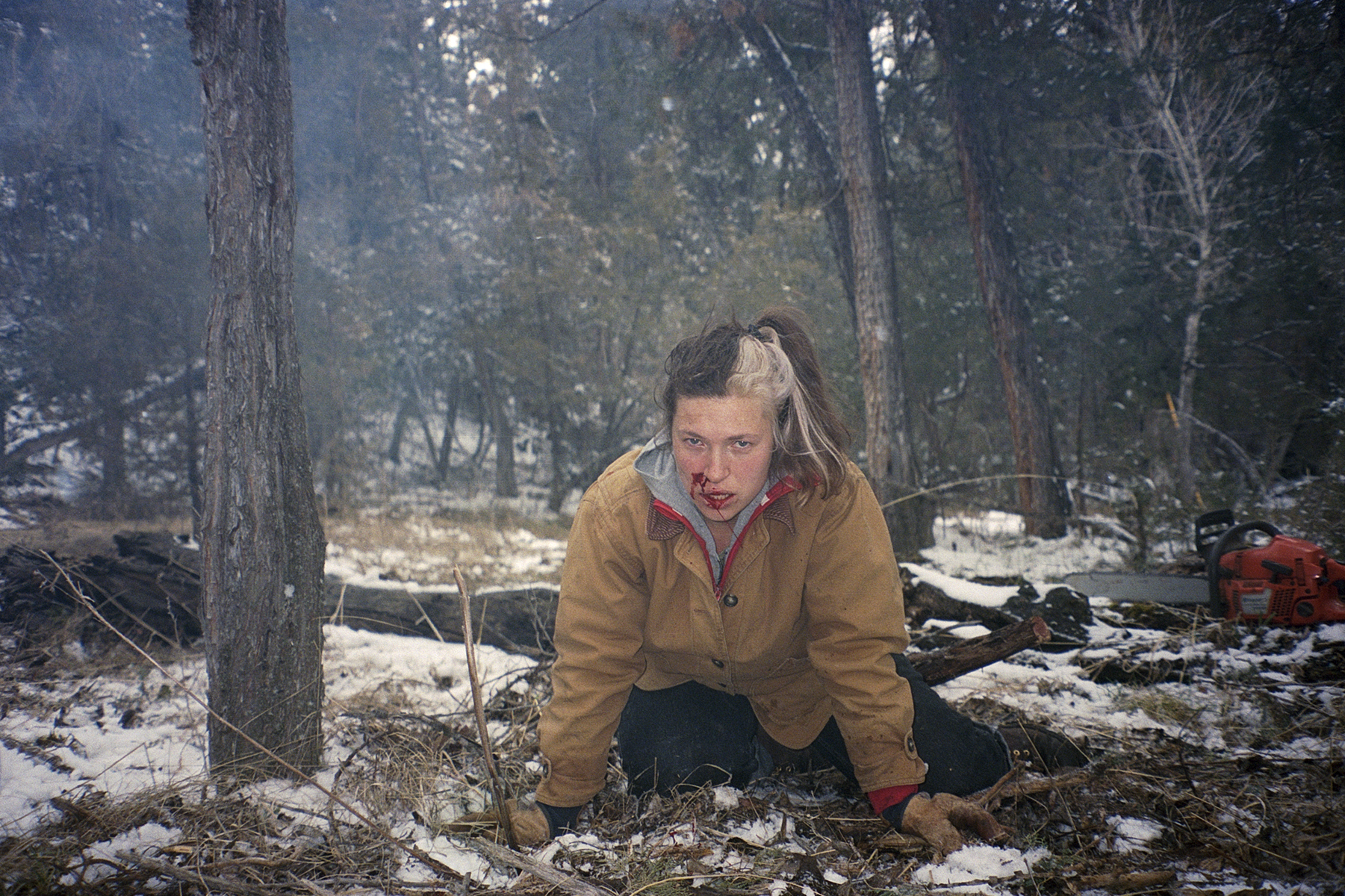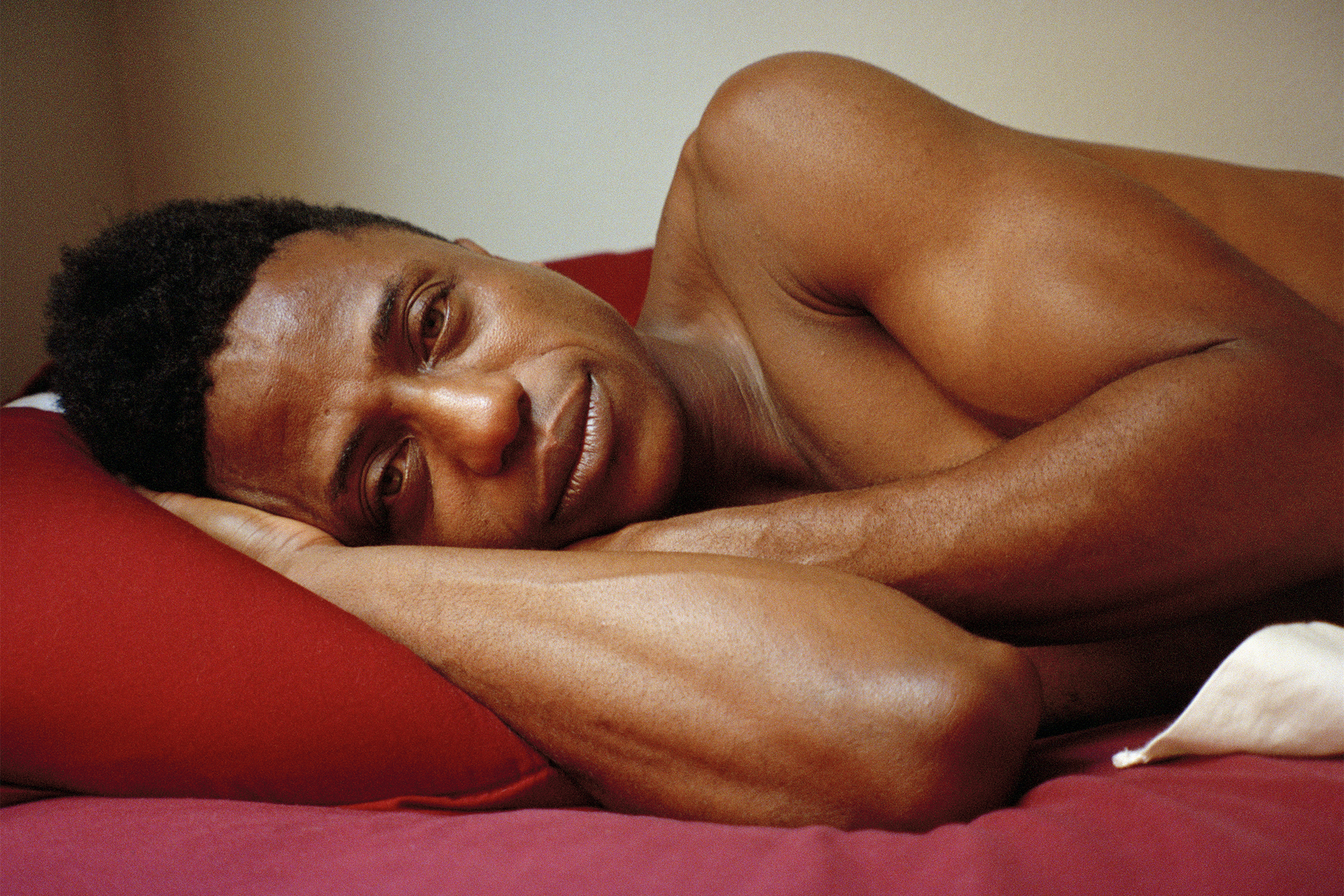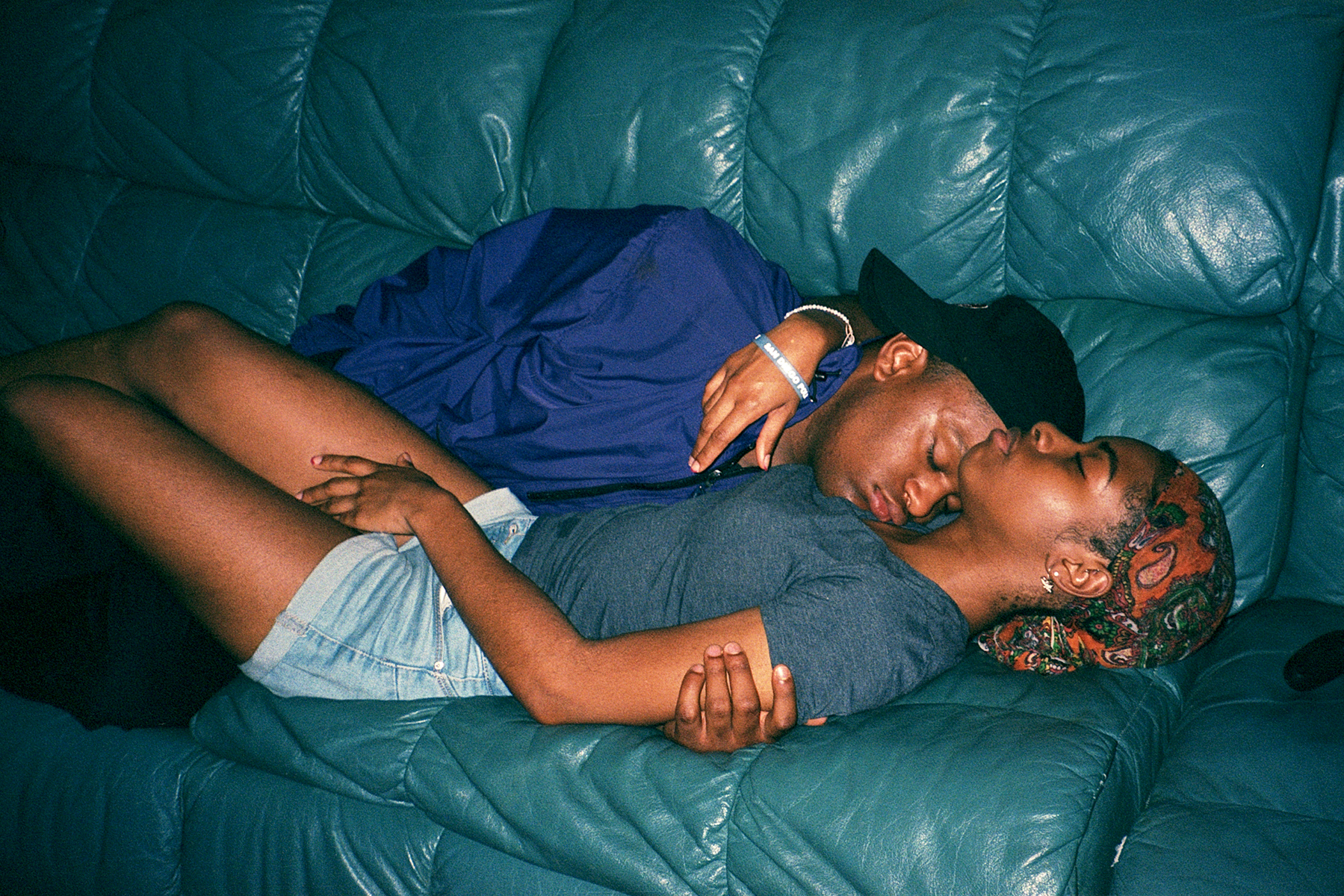
CLARA DEWEESE
In conversation with June T Sanders⚘ ⚘
⚘ ⚘
June T Sanders: Ok lets start with basics. Who are you & why do you make pictures Clara?Clara DeWeese: Hello June! I am Clara DeWeese from Portland, Oregon, currently wandering between Montana and Louisiana. I make photographs to highlight the relationships that bring my life so much meaning. These social bonds unveil a psychological truth which I Illustrate in my images. From my upbringing between rural and urban America, noticing cultural variations of how people cope in our challenging world is what captivates me the most. My work recounts stages of introspection among meaningful moments shared with friends, family and lovers. I seek to articulate hard truths of life’s struggles and recognize human connection as a means for growth. I like to note lifes peculiarities along with its impermanence. Commemorating the past, and sometimes mourning it, but also recognizing the value of the present.


June: I'm curious how your photographs, or photographic visions, intersect with your relationships and your connections and how you move through the world. What sort of dynamics are you navigating in your process?
Clara: Good question. Most of my subjects understand that the camera accompanies me; that it’s not a means of exploitation or profit, but of showing my love for them. If they are uncomfortable with the camera or ask me not to photograph certain scenarios, I always respect that. For the most part, my friends are as open a book as me and understand why I make the images. I don't have these friendships or experiences for the sake of the images, however the fuller and more meaningful they are, the more powerful the photograph becomes. It’s all intertwined, my art and my life. I’m beyond grateful that I’ve been able to figure out how to make my work encourage such deeply meaningful relationships and exploration.
As far as dynamics goes, I seek to emphasize equality between photographer and subject. I want so badly for the work to give my friends agency, even if the images are presenting challenges that are not always elevating. Frankly, I’m tired of seeing so many of the empowering portraits in contemporary photography, because people aren't simply strong. Showing the dichotomies between pride and shame that we all experience is important in understanding the multifaceted human condition. I hope that instead of seeing the people I present as special, different or even beautiful, the varying emotions portrayed allow them to recognize a more universal, well-rounded experience that viewers can personally relate to.
June: That's an interesting and challenging idea, and something I struggle with myself - like, how do we empower people through portraiture without being reductive or hiding the fact that we're all complicated and messy and with a gamut of emotions. Because the flip side of that is maybe - well - unflattering photos?
Clara: Yes! Life is so unflattering and painful! Some of the most captivating art in history portrays that struggle that sinks in so deep. Like Avedon’s excruciatingly honest photograph of Marylin Monroe and almost all of Alice Neel’s paintings that are so uncomfortable to look at. Portraiture is really challenging. Our culture is so hyper-individualistic and competitive and I feel much of contemporary portraiture is often used as a tool to emphasize these ideas. We’re often looking to find differences that prove that we’re unique to make us stand out. The culture I was raised in, in Portland, Oregon was especially dramatic in this regard. Everybody had to be outwardly special somehow, whether it was how they dressed, the music they listened to, or sometimes even their health problems. The good intention there was to encourage equality and respect of different backgrounds and experiences, however it often resulted in extreme egotism and division.
Living is just the strangest thing. American and capitalist culture telling us we have to act strong all the time to win the “game” is such a hoax, that's why a lot of this “empowering” portraiture often feels so silly and dishonest to me. I think the most powerful portraiture and representational imagery is that which encourages finding similarities between us instead of differences. Emotion is an ageless approach to this; the struggle of living we all must endure. This is something people of all backgrounds and experiences can connect with.
June: Right. Visualizing connection to show or find connection with others. Instead of visualizing difference in an individualistic way.
Clara: Exactly. If more of our country could have this approach (both sides), perhaps we could resolve some of the polarization, and be more accepting of people with different backgrounds and mental frameworks than our own. If only it could be that simple...

June: I want to ask you about Montana since it's one of my psychic homes — What’s your experience been like there and what effect has it had on your art making?
Clara: Moving to Montana totally uprooted my stubborn mental framework. It made me step out of my “progressive” queer Portland bubble and see how a generally less “radical” part of the country lives. Though I’ve found an amazing art community and a few significant friendships, it took me a while to adapt to the culture. I’ve appreciated hearing stories of people's lives who are vastly different than mine - real wild country shenanigans! The slower pace that came with living in a less densely populated area allowed me peace of mind that I was never able to grasp while living in the city. The people I met seemed to care less about fashion statements and more about their true intention or passion. Being surrounded by fewer like-minded people made the friends I found turn into loving comrades quickly. This is how the art began to unfold.
My grandparents moved to Bozeman in 1950 for my grandfather to teach painting at Montana State University. He once said “Responsibility is the ability to respond.” They both responded by painting what surrounded them - their children, the landscape, their pets and belongings. The colors used and expressions depicted were poignant and direct. There was little detail, but the concepts and focal points needed no further explanation to portray the depth of their feeling towards the subject matter. They were phenomenal artists and have been incredibly inspiring to me in my artistic career. Montana became the center of their art and work, as it is mine. The abundant nature and peace that comes along with it, allows me to overlook superficial aspects to contemporary culture and concentrate on the valuable. Simple living...I feel like people in cities are constantly seeking entertainment, often in unhealthy ways. Moving to Montana, allowed me to find solace in nature, the only thing that really makes any sense in a world that has been so harmed by the impact of humanity.
June: There’s something that feels so honest about your photos. So rooted in empathy and care and lived experience — in a way that feels incredibly refreshing. It’s one of the reasons I love your work and what it represents. Do you think this comes naturally from your own life experience and commitment to a certain lifestyle? Or is it something that’s been cultivated over time as you’ve progressed as a photographer?
Clara: Thank you for your kind words June, they mean the world to me. My photography revolves around living the fullest life I can. Our world focuses so heavily on “productivity,” that we fail to recognize leisure as constructive. I think a huge part of my work and lifestyle is valuing relaxation, exploration and meaningful relationships, above money or status. Regardless of the path I take professionally, my friends and family will always be my greatest priority and joy. I will work as hard as I need to, to have as much free time to spend with those I love, and my photographic work is a celebration of them.
June: I’m curious how this plays into your thoughts on portraiture in general — especially portraiture related to representation and social change. What questions to do you ask yourself as a portrait photographer to hold yourself accountable to these things; Or, what questions should we all be asking when it comes to this?
Clara: I’ve never identified myself as a portrait photographer I suppose because the images aren’t traditional portraits and I solely document lived experience. One could certainly argue that the work becomes a portrayal of the characters in my life, but the context makes them more narrative than representational in my opinion. I have a lot of feelings about contemporary portraiture, some of which I articulated above. I relate to Nan Goldin in her quote from The Ballad of Sexual Dependency, “I don’t select people in order to photograph them, I photograph them directly from my life. These pictures come out of a relationship, not observation.” While photographic portraiture can be a powerful tool for representation and social change, the most radical thing a fine art photographer can do is live life with a critical lense and document their truth, instead of attempting to expose someone else’s who they may not relate to. Attempting to profit, or build your career by “diversifying” your portfolio is problematic, not progressive. We are at a point in history where most people have a tool in their pocket to tell their own story. Our current battle is for work to be recognized and valued that isn’t only the white, conservative portrayal that has been displayed as normal and beautiful in our country since its foundation. These photographs need to go beyond the concept of representation; they need to make us feel and empathize with the subject, rather than focus on their surface qualities.
So, the questions we should be asking if we photograph humans are:
What are our intentions behind the image? ⚘ Who is the audience and how does that impact the intention? ⚘ Who has control? The photographer, the subject or both? (Note gaze and posture, active vs passive) ⚘ Is this image encouraging us to look beyond the surface qualities of the subject? ⚘ Is this image encouraging critical thought or is it telling the viewer what to think?


June: We've spoken before about the struggle to live an artistic and interesting and fulfilling life and how that doesn't always match up with being an Artist with a capital A or be tied to an institution or even just having full time work. How have you navigated this or what has your experience been with this balance?
Clara: Oh, it’s so challenging!!! I deferred my academic career because of COVID and I’m figuring out the best professional track that can allow me the means and opportunity to prioritize my art. I know I won’t take photographic commissions of any sort so that's out of the picture. I only like doing photography if I have all the creative agency. Selling prints is rare, and I don’t want to financially depend on selling photographs of my friends, so, until recently I thought that only left teaching as an option. I come from a family of teachers, who highly value education. Having the time and space during my formative years to learn and discover a meaningful passion and potential career path, was so fortunate. But institutionalized education isn’t for everyone and it shouldn’t be forced upon students especially at such high costs. Similarly to rehab, it only works if the student wants it to, and it's beyond frustrating how many students are enrolled who don’t actually want to be there. For this reason, and some other challenges I know exist within institutions, I even question that profession.
I recently, miraculously landed a job building sets in the film industry. The profession that allows me to work non-stop (75 hours a week) about half the year, and relax the other half. This, I’m realizing, is my best bet for the time being. Working so hard, and often remotely, makes me lose my mind, but it makes me value time more than ever. That free time is what makes my art thrive. If I can have a job that gives me financial security that I actually enjoy, I don’t need to beat myself up about not being a full-time artist.
June: What gives you life these days?
Clara: I’ve talked about most of my joys in my previous questions - friends and nature. But during these diseased times of rapid climate change, racial injustice, political unrest and rampant illness, it takes greater measures for all to avoid succumbing to hopelessness. It’s important to be politically active and involved in community efforts, but it's also important to find meaning with the resources you have in front of you. My mother told me as a child, “Only boring people get bored.” If covid has taught us anything, it’s, what can we do with our time if we’re trapped in our homes for the next three months? Those fortunate enough to have homes that is. Instead of dissociating from reality by binge watching netflix, finding tasks that make us feel accomplished at the end of the day. My art has been that for me. Even if no one else has or will see it, spending time with it reminds me what to be grateful for.


June: Who or what inspires you? Are there any artists, collectives, projects, writers, etc that you’re particularly excited about right now?
Clara: Nan Goldin, Alice Neel, Kiki Smith, Ren Hang, Wolfgang Tillmans, Helmut Newton, George Dureaux, Alice Neel, Gordon Parks, Bob Dylan, Yoko Ono, Patti Smith, Leonard Cohen, Joni Mitchell...
I read, listen and look, but tend to find most of my creative inspiration from everyday encounters with people.
June: What's next for you?
Clara: With such uncertainty in our current global climate, I’m struggling to make definitive life choices and feel lucky to have any at all. For now, I'll value what I can control, which is an optimistic attitude towards the day to day. I’ll do what I need to get by, allow art to give my life meaning and hopefully find love before the world ends. Thank you so much June, for your support and giving me a platform to share my work and words. Please stay healthy, I’m looking forward to connecting again soon.

____
Born and raised in Portland, Oregon, Clara DeWeese is a photographer who seeks to unveil psychological truth through portraying moments with loved ones. Shouldering the responsibility to communicate visually, she strives to promote vulnerability, empathy, and expression. DeWeese has been an active artist since 2014, when moving to Montana spoiled her with transcendent nature and brilliant friendships. She received her BA in photography from Montana State University in 2018 and has prioritized her creative pursuits since.
June T Sanders lives and works in Palouse, WA.
